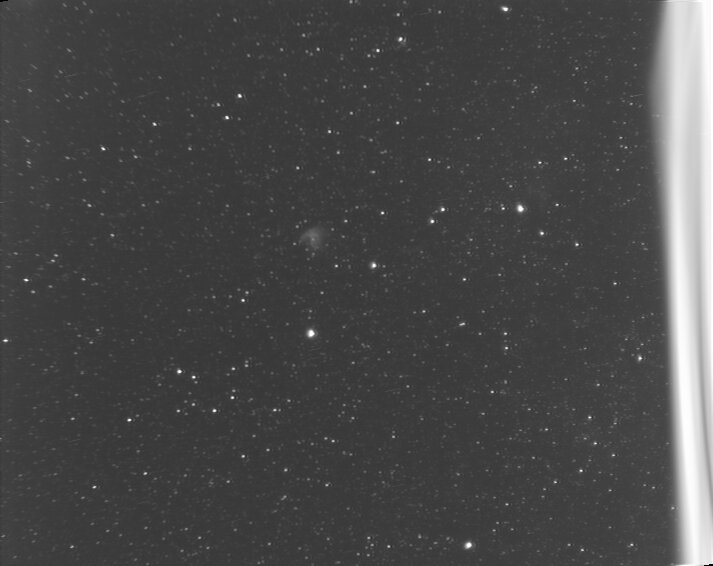
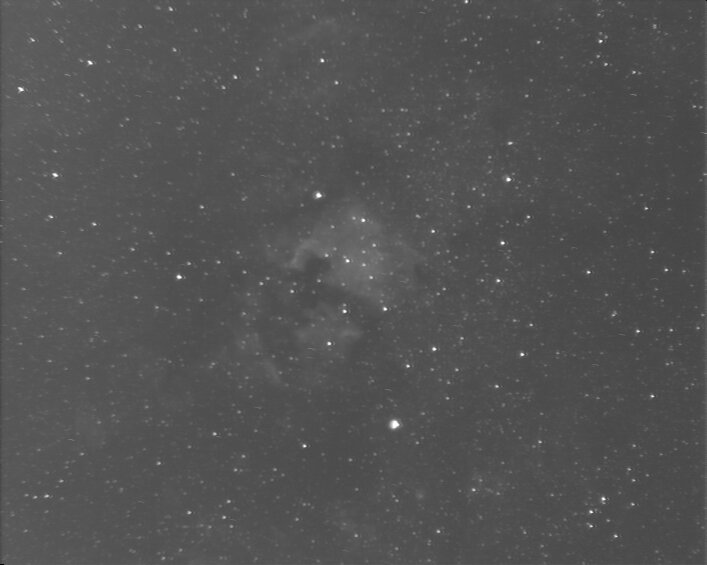
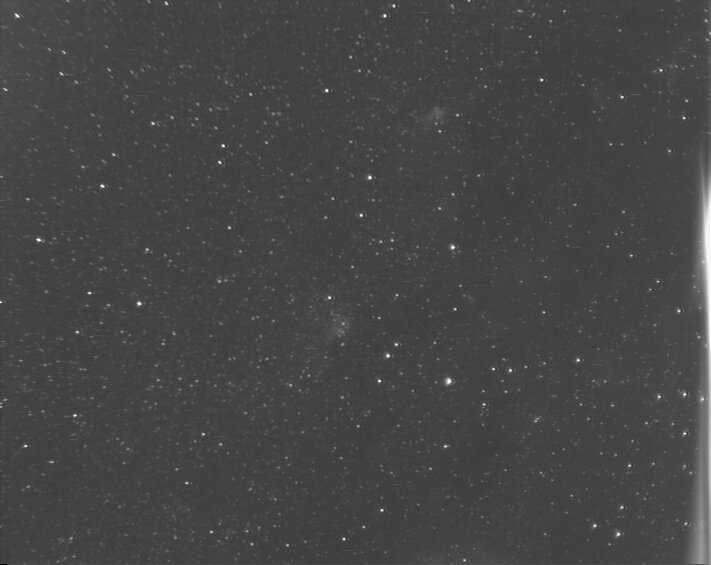
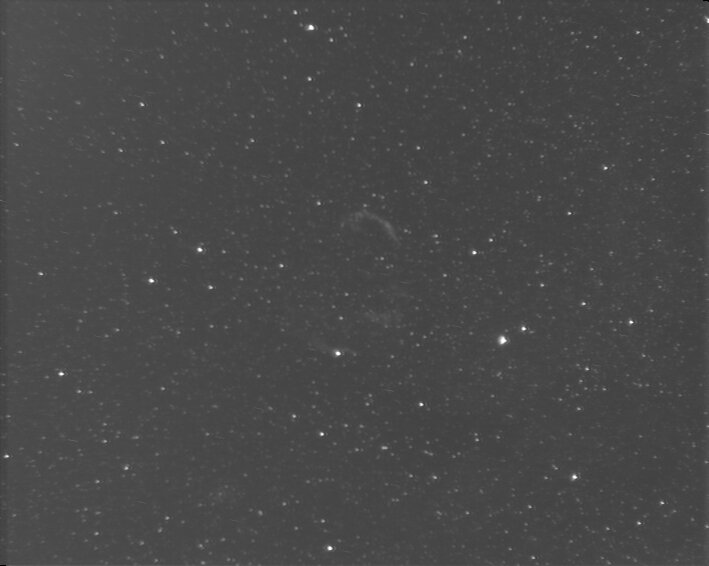
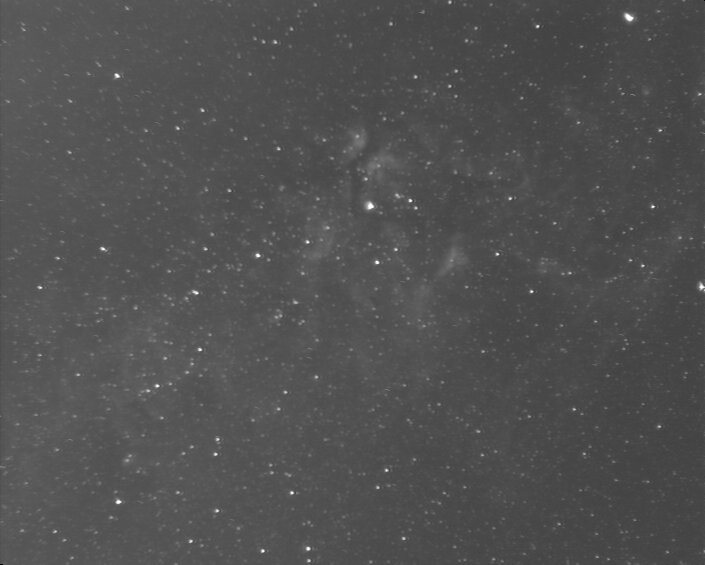
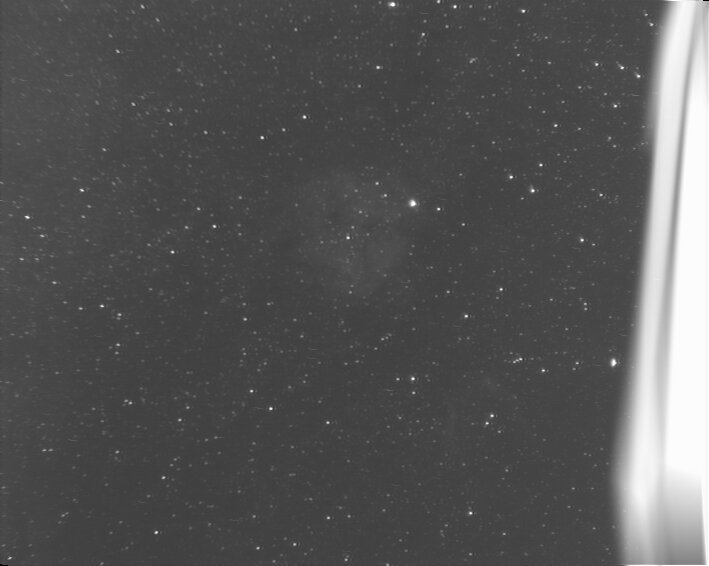
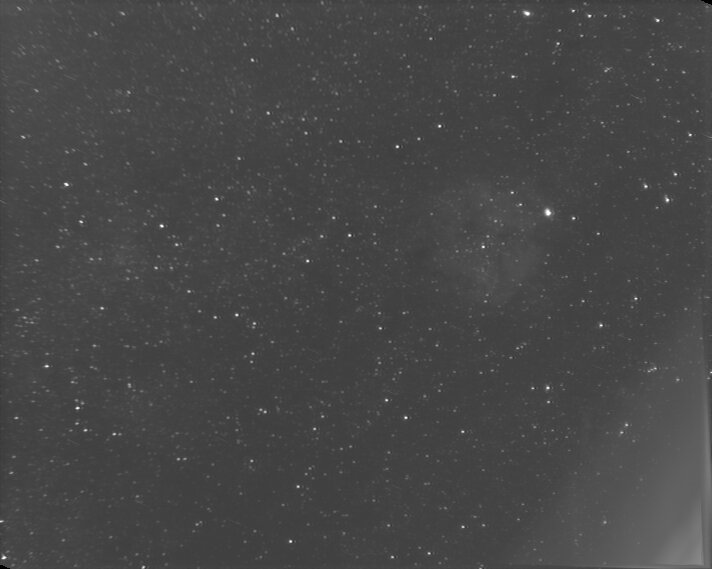
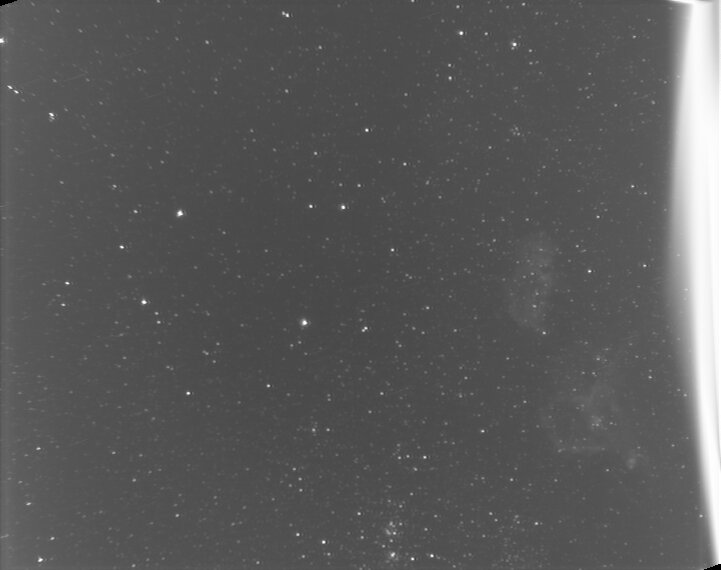
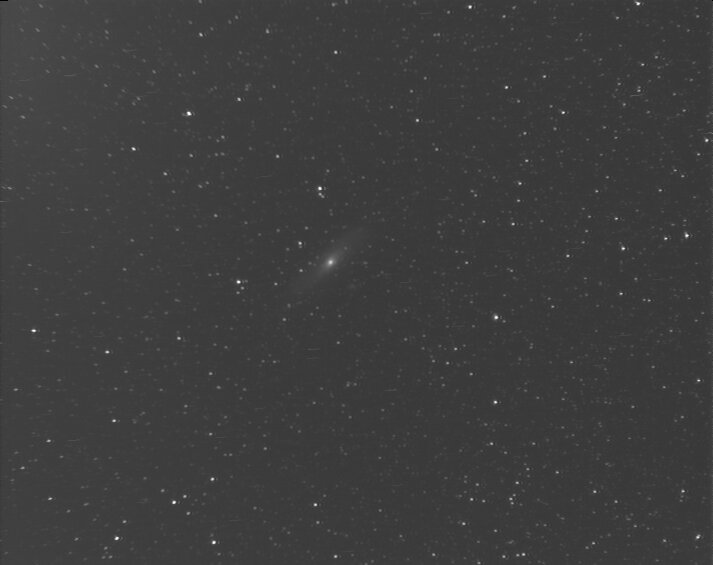
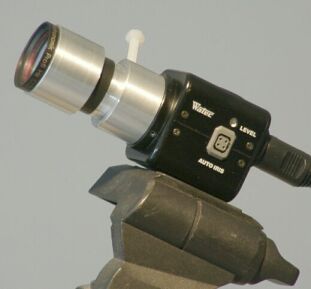
For some nights now, we have tested the visibility of faint, large nebula in the live image of the new watec-camera. Existing experience with the mintron under good observing conditions showed a wealth of milky-way features.
From our observing location, only 15km from the center of munich, a city with 1.5million people, the night-sky is quite bright, with the milky way just visible on the best nights. For the watec this sky brightness is fatal, when using optics with a large aperture setting. With the used optics, a surplus lens from a military night-vision device, f=25mm, f/D=1.1, this sky brightness results in a completely saturated, white image. With the use of a h-alpha filter, the sky brightness could be reduced and the contrast enhanced, to produce usable images.
The used optics has severe scratches on the front lens and was used without an extra shield against the surrounding light sources. The edge of the illuminated building to the north is visible in most images and caused severe glow across some images. With further tweaking of setup and location better results will be acchieved. Some more experiments with proper processing will follow.
The amount of nebulosity visible in the live image was amazing: North America nebula, Pelican-Nebula, Cirrus nebula, IC1396 and such were easily visible. Even fainter structures like the Horsehead Nebula and Barnards-Loop were directly visible. The short focal length does not require a tracking mount, a simple photo tripod was sufficient.
To demonstrate these capabilities, we captured and added the images delivered by the watec. Each object is shown in two versions:
Just averaging all the images, but without enhancing brightness or contrast. This resembles what is visible to the observer in the live-image, if patience and good mental-noise-reduction is applied.

| NGC281, the packman nebula |

| NGC7000, the north-america-nebula |

| NGC7380 |

| Cirrus nebula, not really ideal for h-alpha |

| Nebulosity around Gamma Cygni |

| IC 1396 |

| IC 1396, another set of images |

| IC 1805 |

| M31, though h-alpha does not really make sense here |
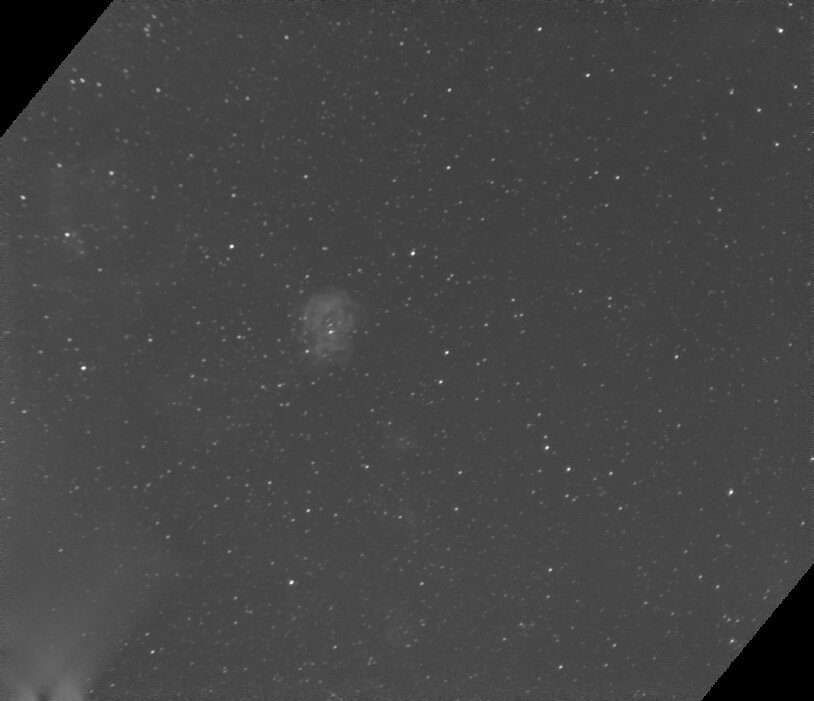
| rosette-nebula |
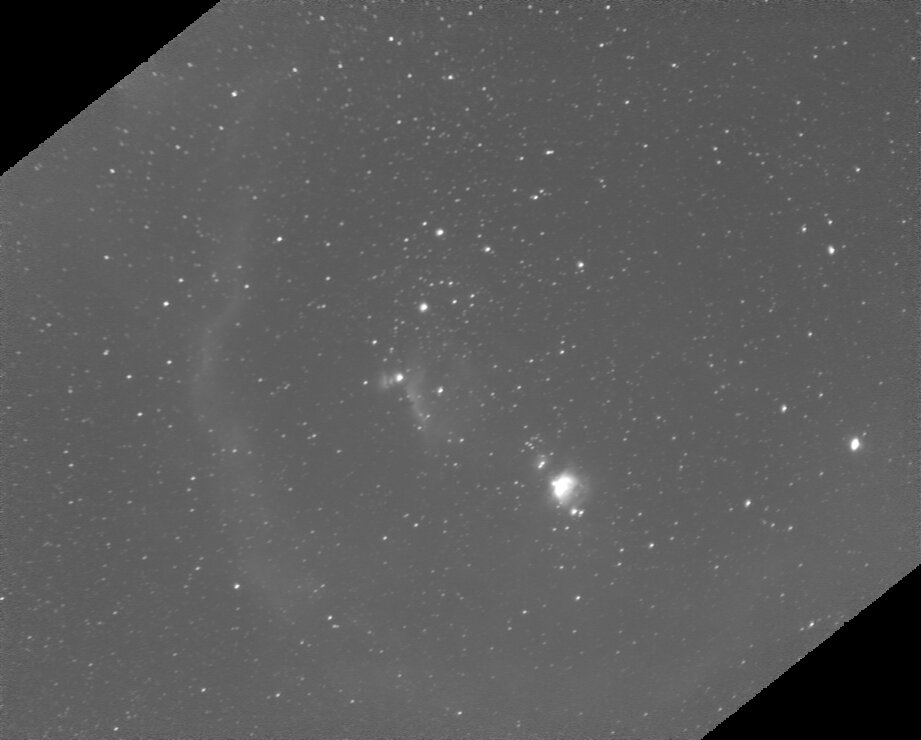
| Orion-nebula, barnards-loop, horsehead-nebula |
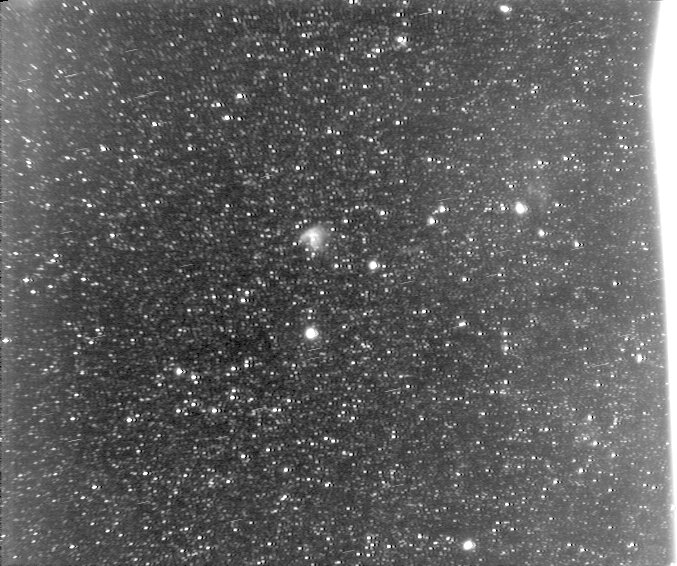
| NGC281, the packman nebula, the nebulosity around gamma cassiopeia can be seen to the right |
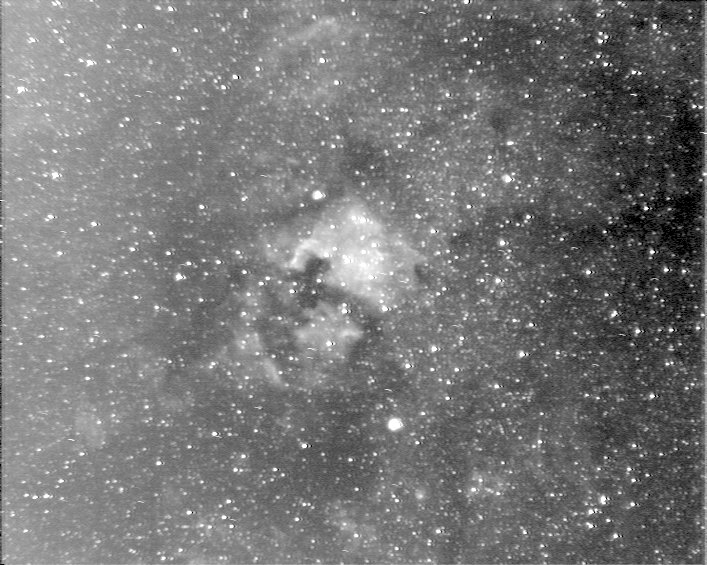
| NGC7000, the north-america-nebula, pelican nebula, and lots of other nebulosity |
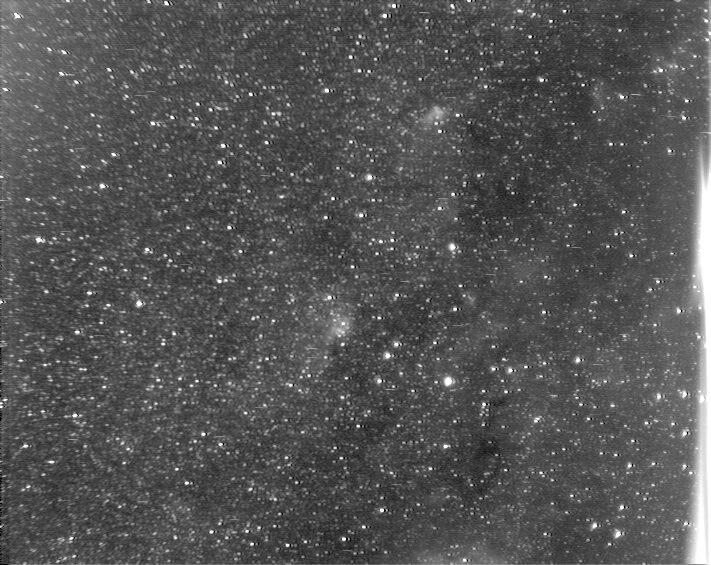
| NGC7380 |
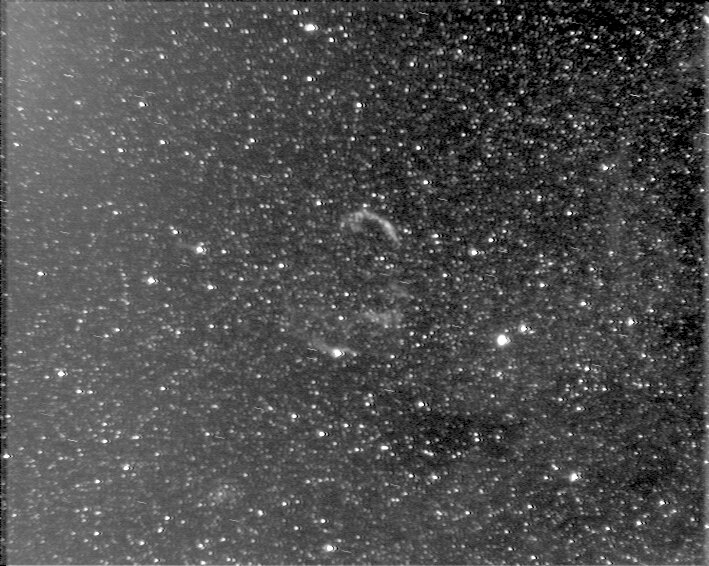
| Cirrus nebula, not really ideal for h-alpha, but still all parts visible |
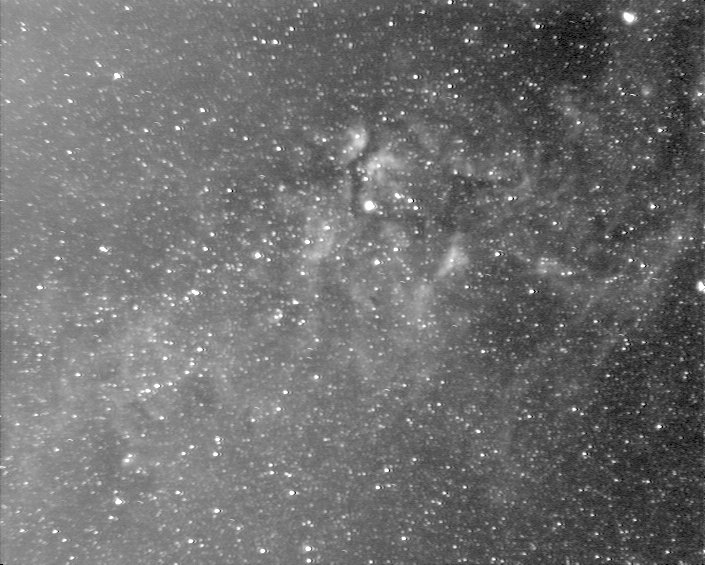
| Nebulosity around Gamma Cygni, Cocoon nebula, several others |
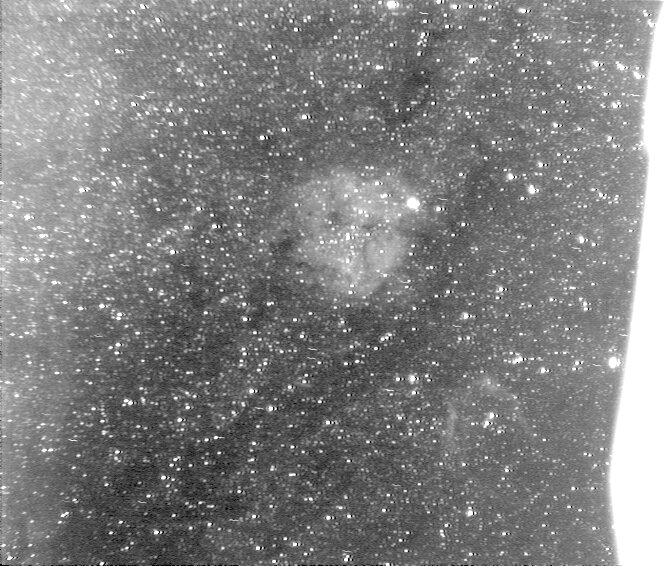
| IC 1396 and additional nebulosity |
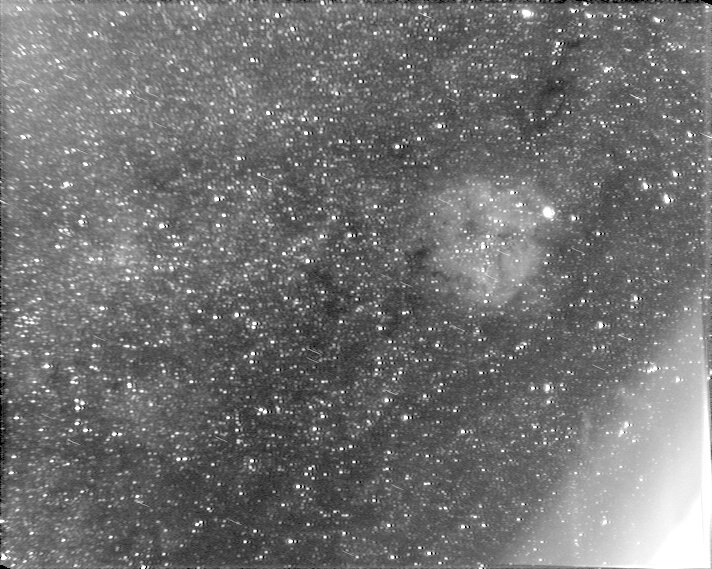
| IC 1396, another set of images |
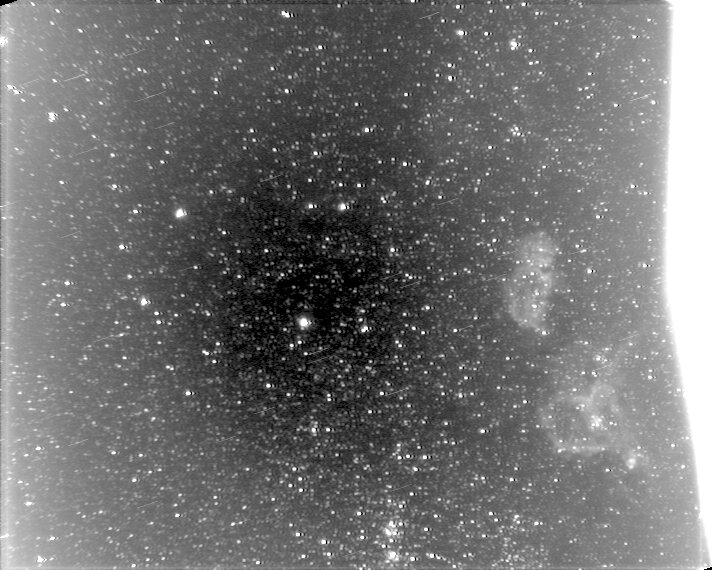
| IC 1805, well visible though affected by the reflected glow of the building |
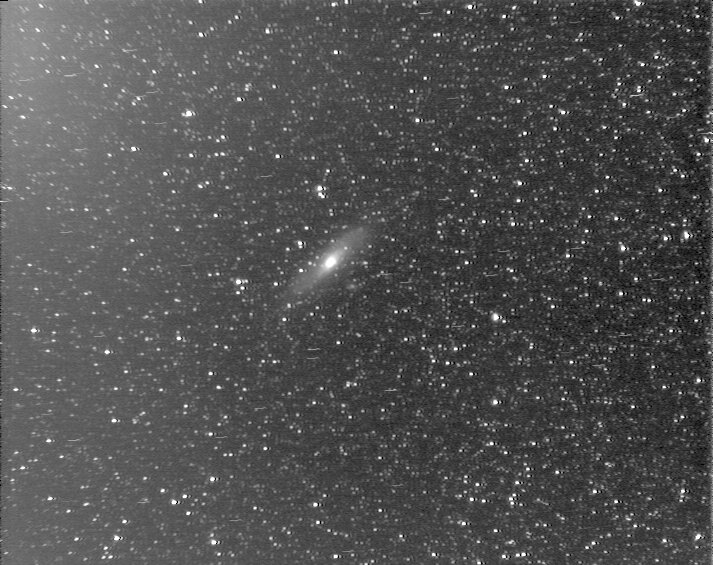
| M31, h-alpha does not really make sense here |
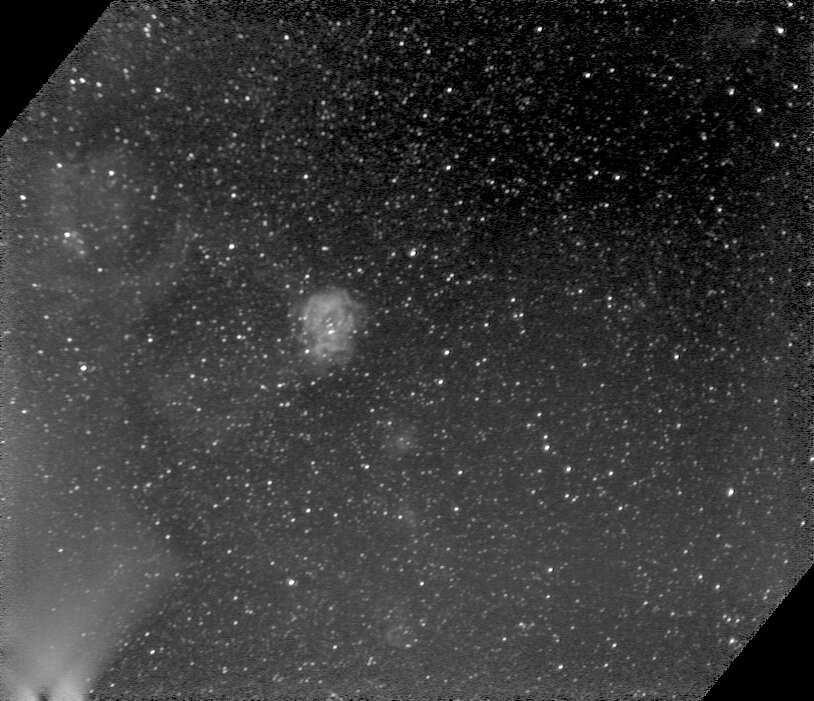
| rosette-nebula and additional nebulosity |
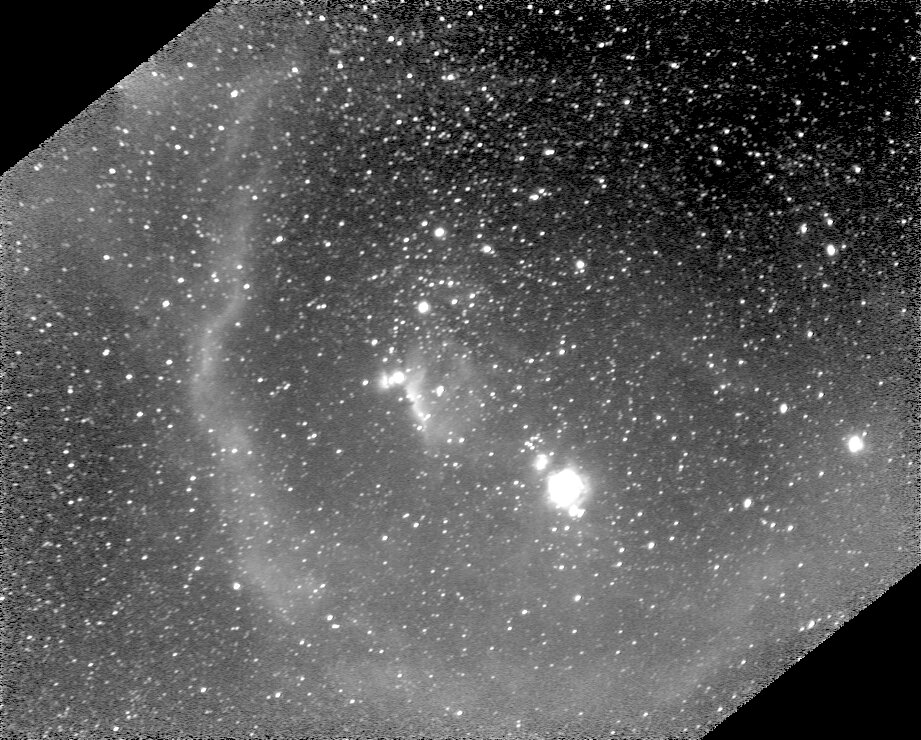
| Orion-nebula, barnards-loop, horsehead-nebula, nebulosity everywhere, just a photo-tripod |